It's the Conversation, Not the Picture (Part 2)
There are as many answers to "what is the value?" as there are to "what does documenting a process mean?" In a previous article, I suggested three rules for process documentation.
- It must provide immediate value.
- An eight-year-old should be able to understand it.
- It's reusable.
Documenting a process for the business means capturing enough information about the work to explain it to various audiences and have them understand where value is created. A conversation about the process with the Process Owners is the best way to define a process' scope. Discussions with Process Leads, Process Architects, and SMEs (subject matter experts) will clarify how the process interfaces with the other areas of the business. It has often been stated that overall the operational performance of the individual processes, as they are defined in the Business Architecture, is relatively efficient. The opportunities to create value and increase the efficiency of the overall process life cycle are very often in the handovers between processes.
Recording the Conversations
Figure 1 shows three different types of diagrams that can be used to record the conversations from working sessions to define and understand processes.
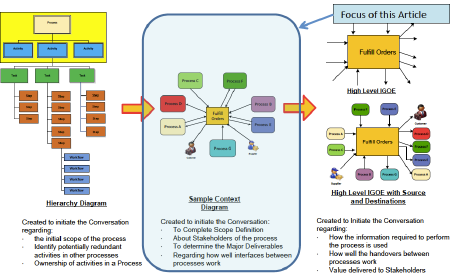
Figure 1. Samples of Various Process Diagrams.

In this three-part series of articles, we'll explore each of these and how their usage adds tremendous value to any organization wishing to improve its business performance.
Context Diagrams
A context diagram is another simple technique for capturing high-level information about a process, as illustrated by Figure 2.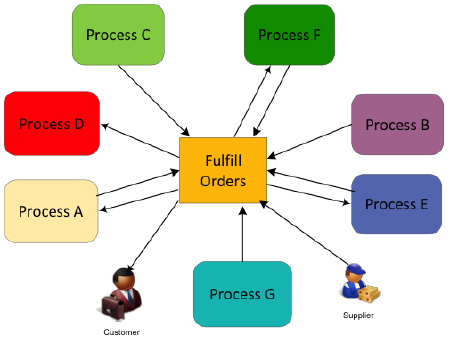
Figure 2. A Sample Context Diagram.
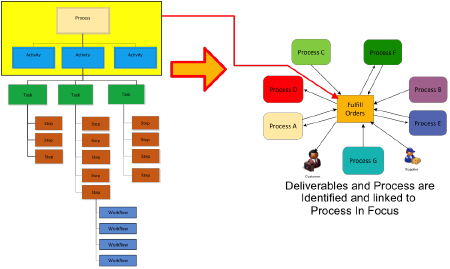
Figure 3. Relationship between a Hierarchy Diagram and a Context Diagram.

To understand a process, which represents how a business operates, it is necessary to speak with experts in the business. There are many ways to record this discussion. Information in a Context Diagram is a view that is not normally available to Process Owners. However, the value of creating a Context Diagram far outweighs the time and effort involved.
|
Method for Capturing Conversations |
Context Diagram |
Meeting Notes |
|
Pros |
|
|
|
Cons |
|
|
1. It must provide immediate value.
• useful to people doing the work — 'fit for purpose'
The information is useful to Process Owners, Process Leads, Architects, and Analysts because it shows all the known interactions with other processes.
• highlights "objectively" where the major pain points exist
If health of the interfaces is indicated on the connection, it also serves as a type of "heat map" that can be used to identify and prioritize focus areas for improvement.
• identifies clearly solvable problems
The issues created by poor handovers to other processes are typically creating a majority of the inefficiencies in the business, but they are not made transparent or analysed until much later in the lifecycle, if ever, due to a strong tendency to be inward focused.
2. It can be explained to an eight year old.
Kids do get it. They don't necessarily understand its value but they can understand what it represents.
3. It's reusable.
The process interfaces and the deliverables are data that will continue to be used and refined as the process is understood in more detail; beginning with a High-Level IGOE where "HOW" these deliverables are used by the business is captured.
Consistent information presented in a consistent format provides management with the opportunity to evaluate, assess, and analyse the business value drivers of operations with more clarity and higher quality. Higher-quality decisions are enabled, with consistent information available for all documented processes. Opportunities are created for increased understanding and value-driven decisions.
Summary
A context diagram is a very simple picture. However, the amount of detail captured can easily detract from this simplicity. The concept is to understand the critical interfaces to other processes, especially those that might not be working well, as well as any external interfaces to stakeholders outside the company. This high-level overview of a process and its interactions with other areas of the business gives a Process Owner very valuable information about their process. It also enables them to make more objective decisions regarding the priorities related to improving the performance of their process as well as improving their understanding of the impact those changes will have on other areas of the organization. This will greatly reduce the often negative unintended consequences of process changes.# # #
About our Contributor:
Online Interactive Training Series
In response to a great many requests, Business Rule Solutions now offers at-a-distance learning options. No travel, no backlogs, no hassles. Same great instructors, but with schedules, content and pricing designed to meet the special needs of busy professionals.


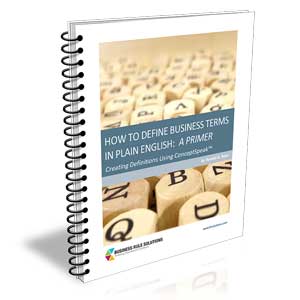






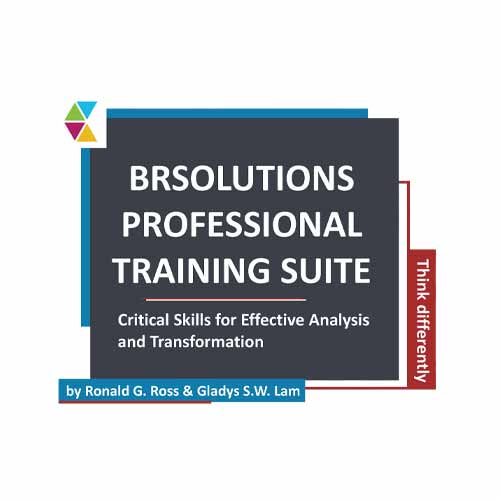

How to Define Business Terms in Plain English: A Primer
How to Use DecisionSpeak™ and Question Charts (Q-Charts™)
Decision Tables - A Primer: How to Use TableSpeak™
Tabulation of Lists in RuleSpeak®: A Primer - Using "The Following" Clause
Business Agility Manifesto
Business Rules Manifesto
Business Motivation Model
Decision Vocabulary
[Download]
[Download]
Semantics of Business Vocabulary and Business Rules